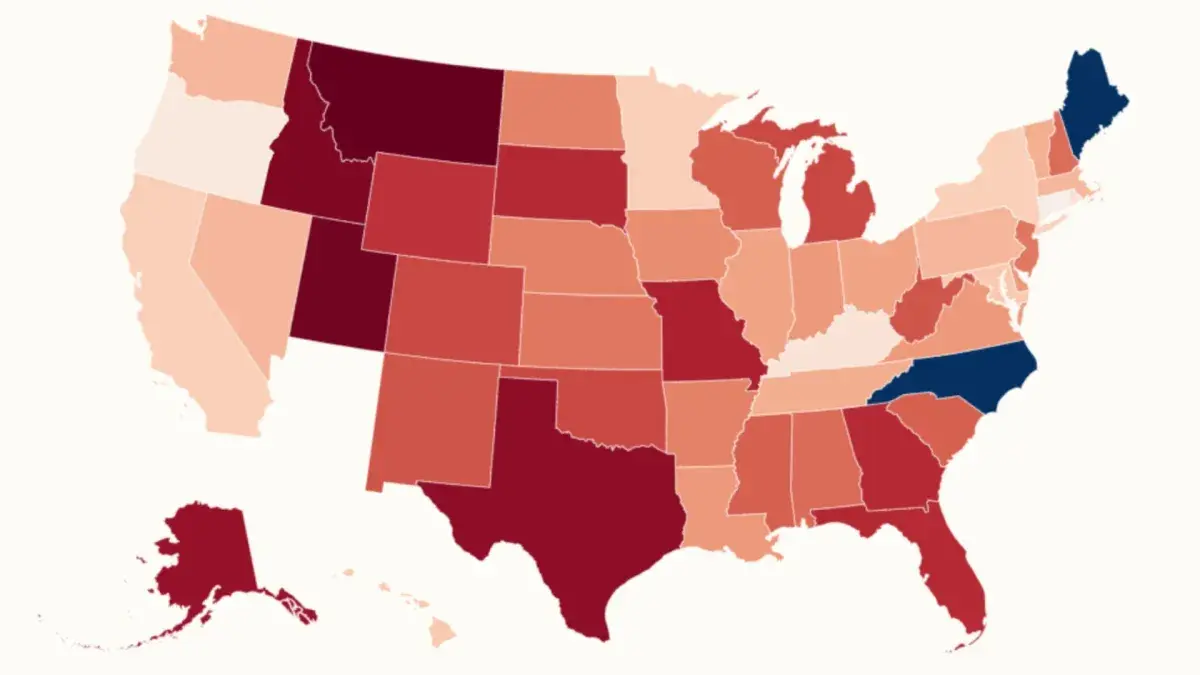
Children across the country are being removed from Medicaid and the Children’s Health Insurance Program (CHIP) as part of an unwinding process happening nationwide in the wake of the COVID-19 pandemic.
In total, just over 6 million children have been removed from Medicaid/CHIP between March 2023 and June 2025, according to data from KFF, a nonprofit health policy research and news organization.
Why It Matters
The majority of American children rely on Medicaid and CHIP in the first 18 years of their life, a study recently revealed, and these high disenrollment figures have raised concern over how this will impact child health outcomes long-term.
Millions more children, and adults, are also expected to lose Medicaid coverage because of new federal policies as well, following the passage of President Donald Trump’s ‘One Big Beautiful Bill,’ according to Congressional Budget Office (CBO) forecasts.
What To Know
During the COVID-19 pandemic, some states expanded Medicaid coverage under the Affordable Care Act (ACA) to help more Americans gain access to healthcare, at a time that was considered a public health emergency.
This inevitably caused nationwide enrollment levels to increase, and they remained elevated throughout February 2020 to March 2023 as federal rules forced states to keep most Medicaid enrollees on the program, even if their eligibility status changed, until March 2023.
After that point, states were allowed to start rolling recipients off Medicaid/CHIP, resulting in nationwide reductions in enrollment —although two states have not yet seen reductions.
Maine and North Carolina have continued to see increases in child enrollment in Medicaid/CHIP despite the unwinding process taking place, both with increases of 2 percent between March 2023 and June 2025.
However, all other states have been drops in enrollment to varying degrees, with some seeing more than one quarter of recipients removed from the programs.
These states include Montana, where child enrollment decreased by 30 percent in the time period, Utah (29 percent reduction), Texas (27 percent reduction) and Alaska (26 percent reduction).
Arizona is omitted because child and adult enrollment data for are unavailable for some months
The reason for the difference in the rate of enrollment between states is because some state and local governments have “taken steps to simplify the paperwork requirements for Medicaid and CHIP enrollment and renewals, which have been shown to increase the number of children who maintain coverage,” Marian Jarlenski, a professor of health policy and management at the University of Pittsburgh, told Newsweek.
The decline in child enrollment in Medicaid and CHIP is “really concerning,” she said. “It will make it harder for children to access all of the care that they need to stay healthy.”
Jarlenski said that Medicaid and CHIP provide important health benefits for children, such as the Early and Periodic Screening, Diagnostic, and Treatment program.
“Even if children can get some care in a safety net setting, it is unlikely to match the full-service healthcare that is included in Medicaid and CHIP coverage,” she said.
She added that research has shown that expanding Medicaid and CHIP coverage has “improved the health of children.” She said that therefore, “any increase in uninsured children in this country is a very negative trend.”
That said, many of these children will have access to other forms of health coverage, Lindsey Leininger, a professor of business administration and director of the Center for Health Care at Tuck School of Business at Dartmouth University, told Newsweek.
She said that at the April 2023 enrollment high point, about 42 million children were on Medicaid/CHIP, while about 38 million children were on Medicaid/CHIP in April 2024, marking a decline of around 4 million children.
However, the uninsured rate among children increased by around 400,000 children over the same period, a much lower number, she said.
Alongside Medicaid unwinding, cuts in funding to the program will also cause reductions to enrollment, as well as how states have been told to end continuous enrollment coverage for Medicaid, which enabled children to remain enrolled for 12 months regardless of changes to parental income.
What People Are Saying
Jarlenski told Newsweek: “What I would suggest to any parent who has an uninsured child is to find a Federally Qualified Health Clinic (FQHC). FQHCs are community-run clinics that are able to provide care for uninsured patients and charge on a sliding-scale according to patients’ ability to pay for care. We also know that sometimes children are incorrectly disenrolled for Medicaid or CHIP—for example, there could be a paperwork requirement that was not met or some administrative error. FQHCs can help families with the paperwork process to re-enroll children who qualify in Medicaid or CHIP.”
Leininger told Newsweek: “The impacts are varied: Many families may be unaware that coverage has lapsed. I’m certainly guilty of leaving administrative reminders unopened when life gets overwhelming—and I have a stable address and phone number! Others remain eligible, aware that they need to redetermine, and fly through the renewal process. Yet another group remains eligible and aware of redetermination but hits roadblocks in the renewal process. Among those who have lost Medicaid/CHIP eligibility, some are eligible for Marketplace or employer-sponsored coverage and others lack eligibility for any coverage. It’s the latter group that I worry the most about.”
She added: “I have a lot of compassion for families navigating new hurdles. I do take comfort knowing that most uninsured children are eligible for public coverage, conferring continued access, even though awareness may be a gap. My primary related worry is access for uninsured children who are ineligible for coverage, many of whom are undocumented immigrants.”
What Happens Next
As the unwinding process following the COVID-19 pandemic continues, alongside new rules implemented by the Trump administration, reductions in Medicaid and CHIP enrollment are expected to continue across the country.